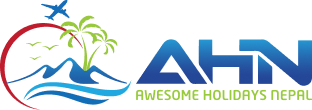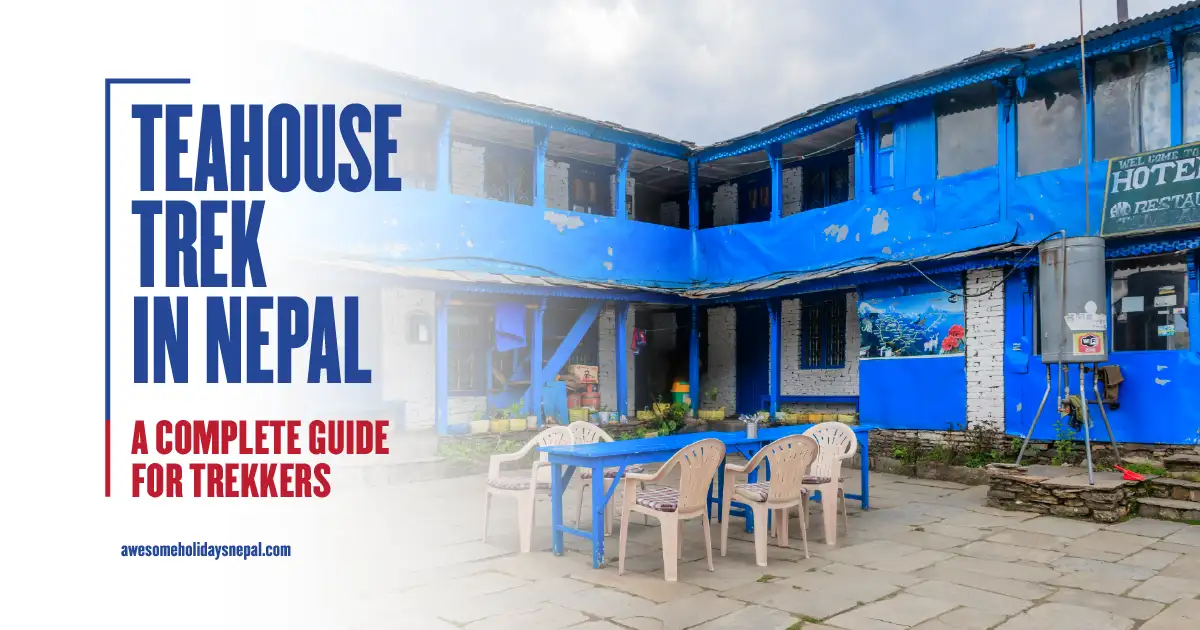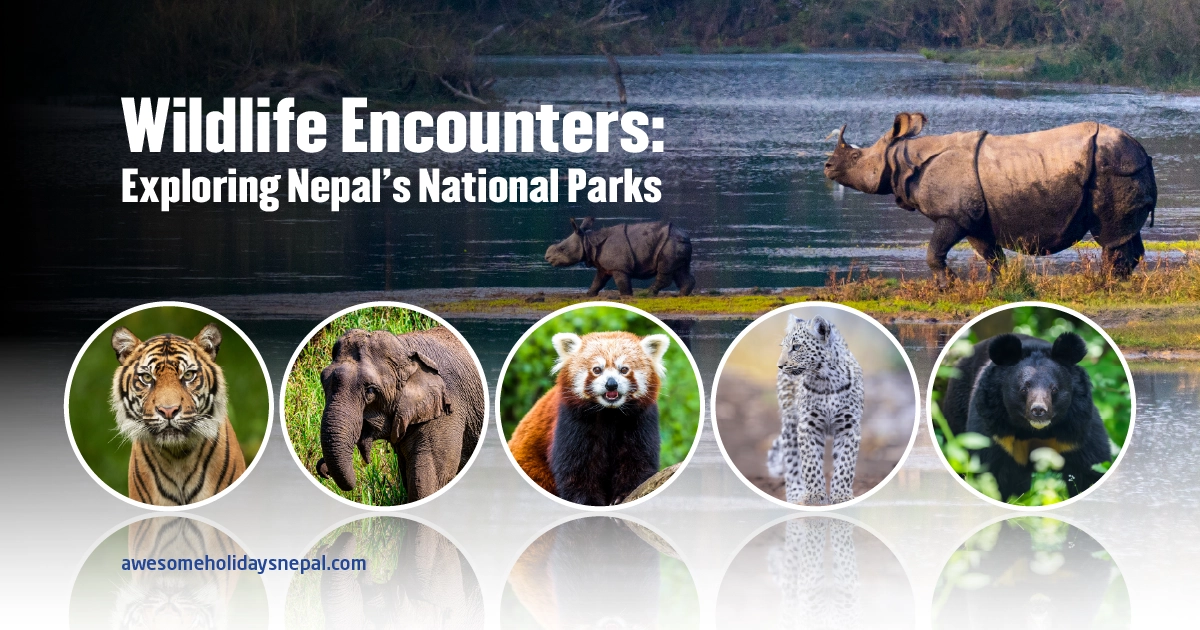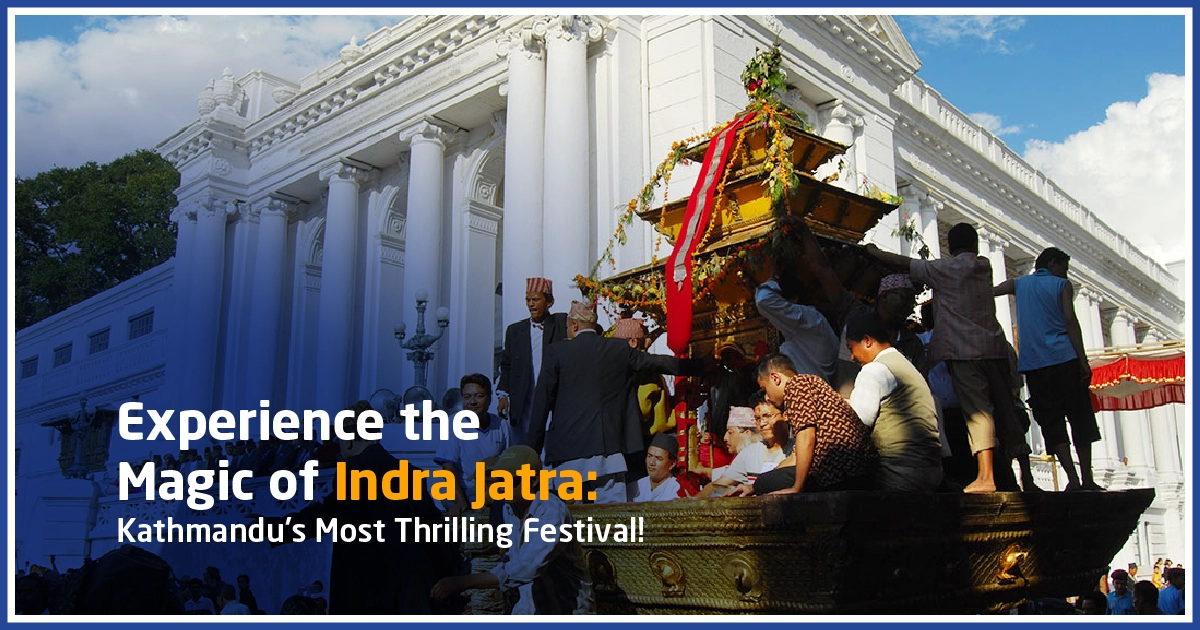All Info About Everest Three Passes Trek
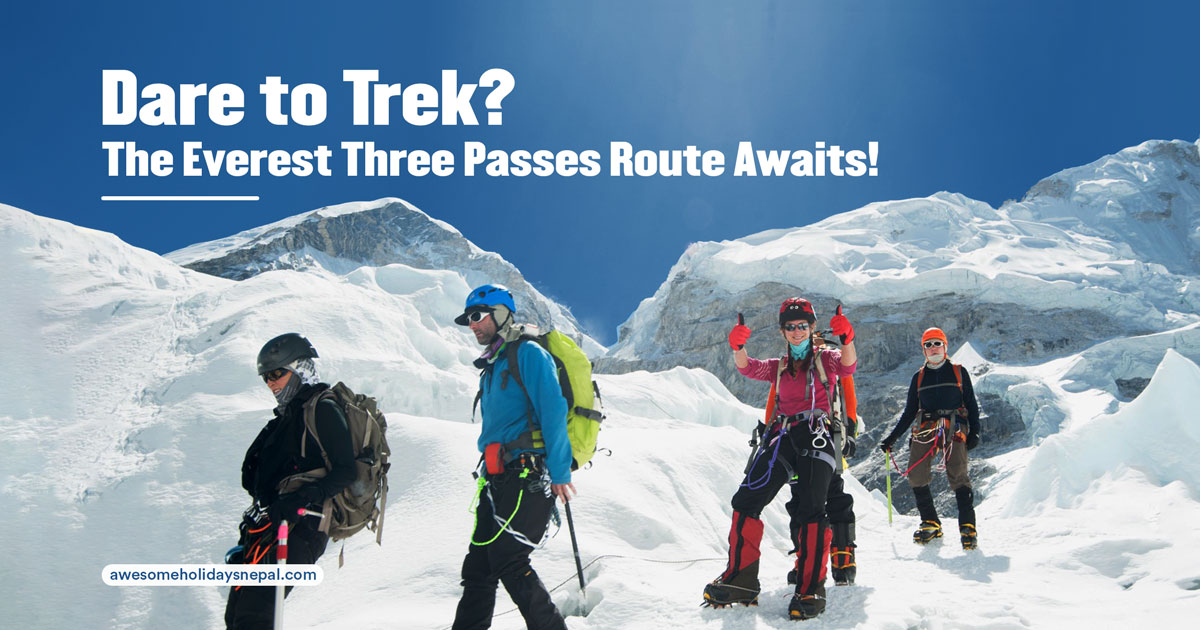
More than simply another trekking path in Nepal, the Everest Three Passes Trek is the ultimate test for intrepid individuals wishing to stretch themselves and simultaneously see the rugged beauty of the Himalayas.
The classic Everest Base Camp (EBC) walk pales in comparison to this one, which crosses three high-altitude mountain passes: Kongma La (5,535m), Cho La (5,420m), and Renjo La (5,360m). The trip is epic in terms of endurance, stunning scenery, and unmatched adventure, culminating in some of the most magnificent mountain vistas on Earth. So, here we will learn everything about the Everest Three Passes Trek.
Oh, and if you want to know about Budget vs. Luxury Everest Base Camp Trek, do read our blog.
Why Choose the Everest Three Passes Trek?
This expedition is for you if you wish more than a visit to Everest Base Camp. The Three Passes route is a circular trek that follows several perspectives, side trips, and cultural immersion in the Khumbu district. This schedule guarantees fresh scenery, varied terrain, and less traveled paths, in contrast to the traditional EBC trek, which follows a single path up and down.
Expect to experience:
- Crossing three of Nepal’s highest and most thrilling mountain passes
- Jaw-dropping panoramas of Everest, Lhotse, Nuptse, Ama Dablam, Makalu, and Cho Oyu
- A chance to explore remote valleys and hidden gems beyond the regular trekking routes
- A full-circle experience of the Everest region, including Gokyo Lakes and Kala Patthar
- A deep dive into Sherpa culture, ancient monasteries, and traditional mountain villages
This trek is for those who crave adventure, love a challenge, and want to experience Everest from every possible angle.
Clockwise vs. Counterclockwise Route – Which is Better?
Although both ways are feasible, for several reasons counterclockwise is highly advised. The slow rise through Renjo La Pass enables better acclimatization, hence greatly lowering the possibility of altitude sickness. Furthermore, beginning with Renjo La gives a beautiful landscape progression since hikers see the elegance of Gokyo Lakes and Everest Base Camp toward the end of the hike, therefore keeping inspiration up. Furthermore, the steepest sections are approached in a more manageable direction, so the journey is somewhat more straightforward than on the counterclockwise route.
Here’s a breakdown of elevation gains when following the clockwise route:
- Renjo La Pass (5,380m) – Gain of 1,200m
- Cho La Pass (5,420m) – Gain of 700m
- Kongma La Pass (5,540m) – Gain of 400m
Route Overview: The Three Passes Circuit
Typically spanning 17–21 days, the Everest Three Passes Trek is a long and challenging loop. Here are the most significant highlights distributed along the route:
Lukla to Namche Bazaar, 2860 meters
Starting with an exciting flight to Lukla Airport, dubbed among the most dangerous airports on the planet, your adventure starts.

Starting here, you pass suspension bridges over the Dudh Koshi River and tour rich forests before landing in the bustling Namche Bazaar—the Sherpa capital.
Kongma La Pass (5,535m) and EBC (5,364m)
The top and most demanding of the three, Kongma La Pass presents the first major obstacle. You will head down toward Everest Base Camp after conquering it, passing through glacier moraines and formations of icefall. Kala Patthar (5,545m) gives among the most stunning views of Everest during a side trip.
Cho La Pass (5,420m) and Gokyo Lakes.
Cho La Pass is next; it is a challenging but technical route where people have to hike over a glacier and icy ground.
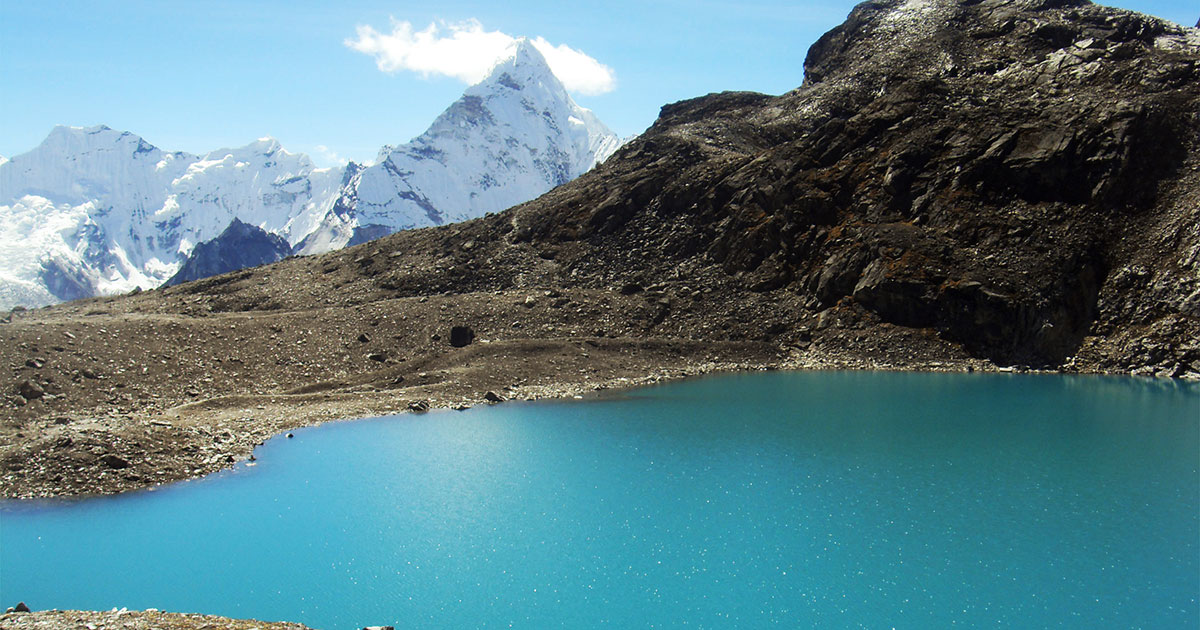
The lovely Gokyo Lakes and Gokyo Ri (5,357m), which offers the best perspective of Everest, are located along Gokyo Valley on the opposite side.
Renjo La Pass (5,360 m) and Decent to Lukla
Renjo La Pass is the last difficulty; it offers a stunning view of Everest, Lhotse, and Cho Oyu.
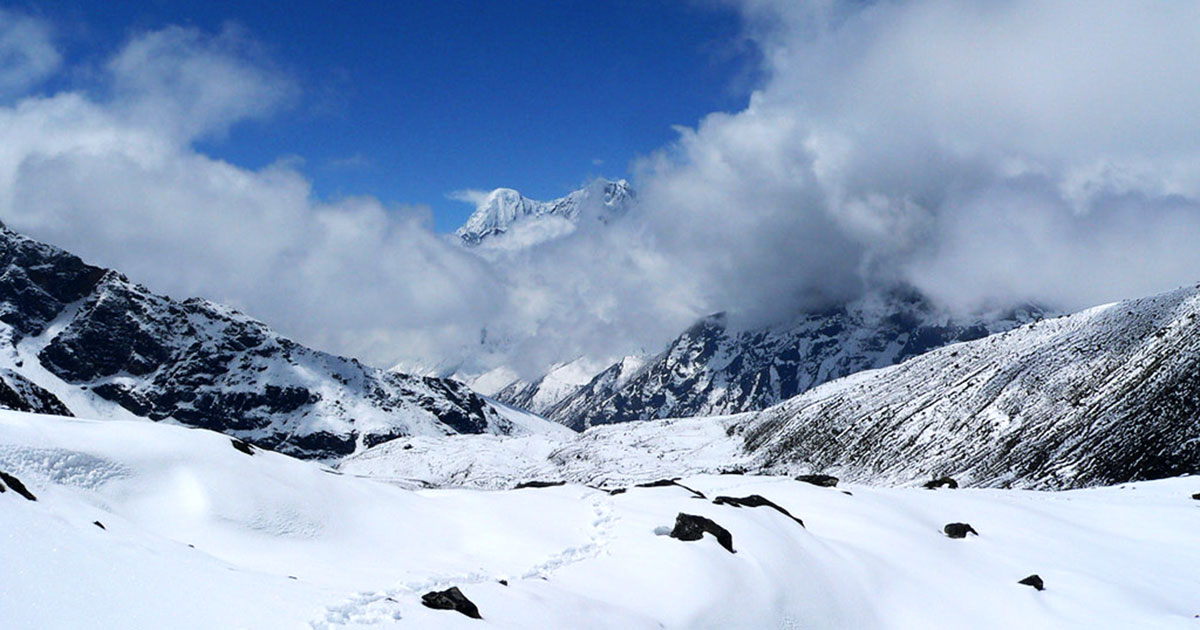
From here, the trail passes through isolated Sherpa towns before arriving in Lukla from where you can fly back to Kathmandu.
Best Time for the Everest Three Passes Trek
Timing is crucial for a successful and enjoyable trek. While it is possible to do this trek year-round, the best seasons are:
Spring (April – May)
Spring features blooming rhododendrons that provide a pop of color to the tough trails along with mild temperatures and clear blue skies. Expect a busy base camp atmosphere since this is when Everest climbers are ready for their summit push.
Autumn (October – November)
It is the most popular trekking season due to stable weather, comfortable temperatures, and crisp mountain views. However, trails can get busy nonetheless, especially around Namche Bazaar in Everest Base Camp.
Winter (December – February)
This season is a hidden gem for those seeking a calmer, and more peaceful trip. Though the temperatures might be bitterly cool, the sky is still clear and offers unimpeded views of the mountains. You have to have good winter equipment.
Monsoon (June – September)
Not recommended due to slippery trails, heavy rains, and poor visibility. However, if you don’t mind the wet conditions, you will get to see the lower Khumbu Valley’s rich, green topography.
Safety Tips: Choosing a Trustworthy Trekking Company
Since the Three Passes Trek is a high-altitude and physically demanding journey, choosing a reliable trekking company is essential. Here’s what to look for:
Licensed and Experienced Guides – Ensure your guide is trained in altitude sickness management and emergency procedures.
Proper Acclimatization Schedule – A responsible company will have built-in acclimatization days to prevent altitude sickness.
Emergency Evacuation Plan – Make sure they provide helicopter evacuation services in case of emergencies.
Small Group Sizes – Smaller groups mean personalized attention and better safety measures.
Transparency in Pricing – No hidden fees or unexpected costs. Always check what’s included in the package.
Insider Tips for a Successful Trek
Prepare for Connectivity Challenges – Wi-Fi is costly and inconsistent beyond Namche Bazaar in a few areas. Keep a local SIM card in case of emergency calls.
Bring Enough Cash – ATMs in Lukla and Namche abound but they are not always dependable; so have enough money. Most tea houses and stores will take cash only.
Lukla Flights Can Be Delayed – Flights to and from Lukla are very weather-driven so Lukla flights may be postponed. Expect possible holds, so plan some buffer days in your calendar.
Layer Up for the Cold – Nights at High Elevation Quality gloves, thermal layers, and a nice down jacket are absolutely necessary.
Essential Permits & Guidelines
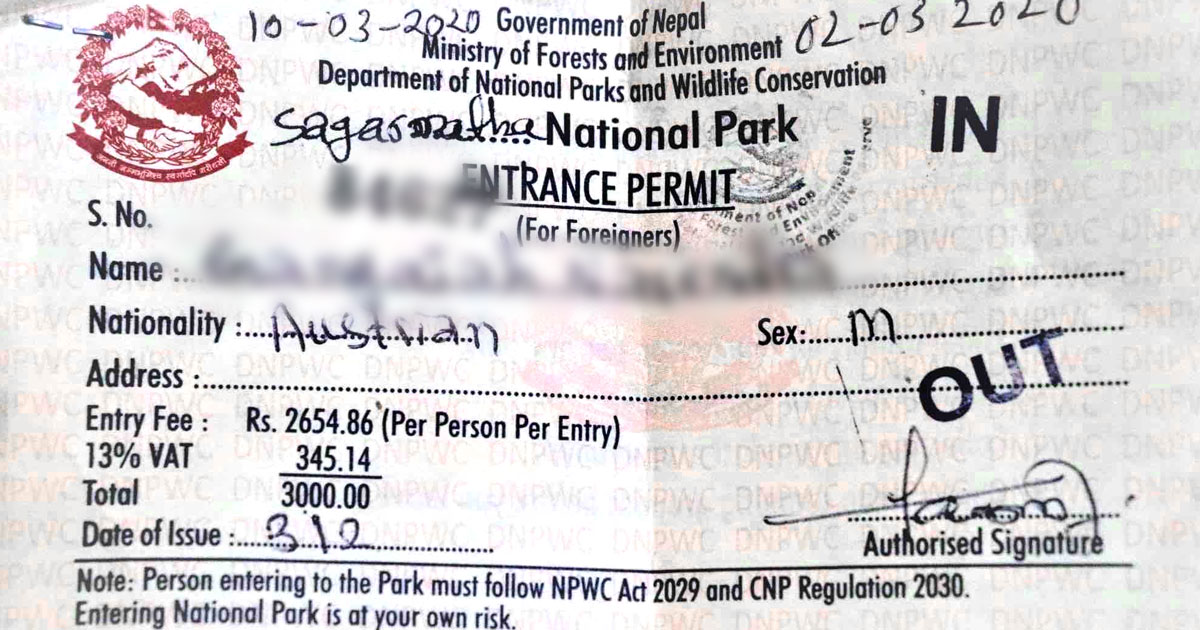
For the Everest Three Passes Trek you will need to get two permits: Sagarmatha National Park Entry Permit and Khumbu Pasang Lhamu Rural Municipality Entrance Permit.
Final Thoughts: Is This Trek for You?
Among the most difficult but also most satisfying experiences in Nepal is the Everest Three Passes Trek. Though it calls for good physical strength, mental toughness, and appropriate planning, the feeling of achievement at the end is unmatched.
This trek is absolutely worth it whether you’re an experienced hiker searching for more of Everest’s path off of the standard route than Everest Base Camp, or whether you just wish to experience the Everest region beyond the usual trail. Once-in-a-lifetime experience: the mix of high passes, secluded valleys, glacial lakes, and unrivaled mountain vistas.
So, would you be prepared for the most challenging Himalayan expedition?
FAQs
Expand AllWhat is the Everest Three Passes Trek?
The Everest Three Passes Trek is one of the most adventurous and challenging high-altitude treks located in Khumbu region of Nepal. The trek is known for traversing three high passes: Renjo La (5,360m), Cho La (5,420m), and Kongma La (5,535m).
What are the three passes in Everest Base Camp?
The three high mountain passes in the Everest region are Kongma La Pass, Cho La Pass, and Renjo La Pass.
What permits are required?
You will require two passes, the Sagarmatha National Park Entry Permit and the Khumbu Pasang Lhamu Municipality Entry Permit to trek through the Everest region. Apart from these, you can get the optional Gaurishankar Conservation Area permit if you hike from Jiro to Everest.
These passes can be obtained easily from the Tourism Board of Nepal or from the Lukla or Monjo check post if you are already in Lukla.
How difficult is the Everest Three Passes Trek?
The Everest Three Passes Trek is considered to be a very high challenging high-altitude trek
What kind of fitness level is required?
To trek to the Everest three-pass, you will require a moderate fitness level since you will walk at least 6-7 hours a day. You will also require good cardiovascular endurance and muscular strength to ascend easily through rough terrain.
If you aren’t somebody who doesn’t perform physical training regularly, it is better to start training at least ¾ months in advance. Ensure you include cardio, flexibility exercises, and strength training in your workout to prepare your body for the trek.
How do I get to the starting point?
If you want to trek through the regular route via Namche Bazaar, you can get to the starting point of the three-pass trek via a flight from Kathmandu to Lukla airport. If you prefer the alternative route through Jiri, you must travel by road to Jiri.
How long is the Everest three passes trek in Nepal?
Everest three passes trek in Nepal is 111.9-mile loop trail near Chaurikharka, Province 1. The three-pass trek takes 17 -21 days, starting with an exhilarating flight from Kathmandu to Lukla. However, the trek duration might vary depending on your chosen route and the packages you booked.
What is the best time to do the Everest Three Passes Trek?
The best time to do the Everest Three Passes Trek is during the spring (March to May) and autumn (September to November) season.
Is there a map available for the Everest Three Passes Trek?
Yeah, there are maps available for the Everest Three Passes Trek.
What kind of fitness level is required?
To trek to the Everest three-pass, you will require a moderate fitness level since you will walk at least 6-7 hours a day. You will also require good cardiovascular endurance and muscular strength to ascend easily through rough terrain.
If you aren’t somebody who doesn’t perform physical training regularly, it is better to start training at least ¾ months in advance. Ensure you include cardio, flexibility exercises, and strength training in your workout to prepare your body for the trek.
What currency should I carry?
You will need Nepalese rupees for any personal expenses other than those offered by the trekking company for your Everest three-pass trek. However, it is better to have some USD or your home currency as a backup for emergencies or returns.
Exchange your currencies for Nepali rupees in Kathmandu to find the best rates.
What is the cost of the Everest Three Passes Trek?
The cost of the Everest Three Passes Trek ranges from USD 1,300 to 2,000 per person.
Is the Everest Three High Pass Trek suitable for beginners?
No, the Everest Three High Pass Trek is not suitable for beginners
What should I pack for the trek?
You should pack warmer clothes, trekking gear, all your necessary medications, and your travel documents for the trek. Additionally, you should pack protein bars, dry nuts, and fruits for snacking on the trek, along with a refillable water bottle.
Even though the company will provide you with packaged water bottles along the journey, it is convenient to carry your own.
What kind of accommodation is available?
While you have the option of standard, three-star, and five-star accommodation in Kathmandu, the options might be restricted on the trekking route. Along the route, you will most likely find tea houses with clean rooms.
And yes, it is possible to get private rooms or rooms with attached bathrooms, but you will have to pay an extra charge.
Is it possible to trek solo?
It is possible to trek solo to the Everest region; however, you must be well prepared to adapt to the exciting yet exhilarating trek. You will need additional physical and mental strength to do so.
A solo traveler must get the required documents to get the permit.
Related blog posts
Discover a choice of tourist destinations loved by most of our visitors. Whether you're on a jungle safari to spot rare animals or walking through a world heritage site, these well-planned itineraries cover the major highlights of Nepal.
